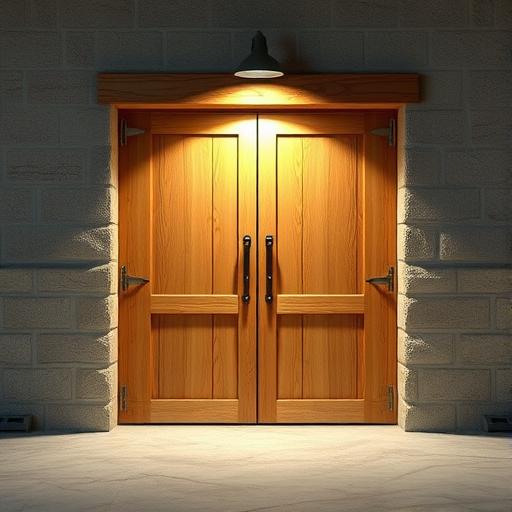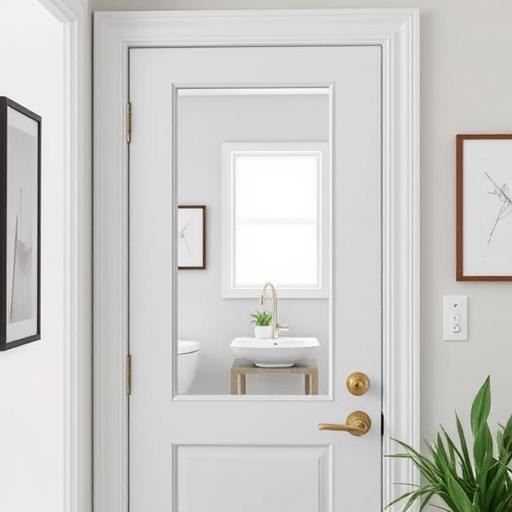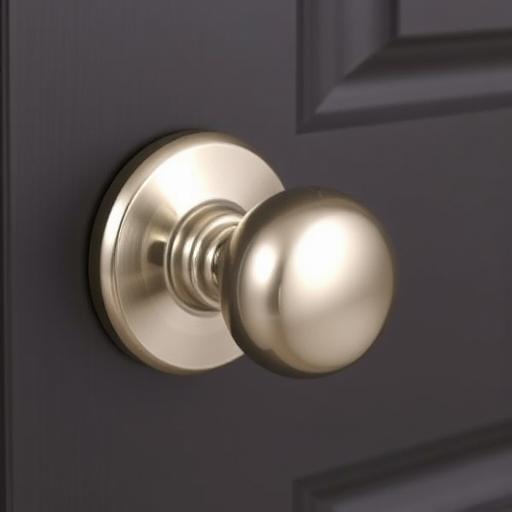How to Build Sloped Basement Doors
Sloped basement doors are more than just a functional necessity—they’re a smart solution for managing water drainage, aligning with uneven terrain, and enhancing the overall safety and aesthetics of your home. Whether you’re dealing with a sloped entryway due to natural landscape or structural design, building a door that fits perfectly is crucial. A well-constructed sloped basement door not only prevents water infiltration but also ensures smooth operation and durability. In this guide, we’ll walk you through the essential steps, from measuring and planning to installation and maintenance, so you can confidently tackle this project and create a door that’s both practical and visually appealing.
The Importance of Sloped Basement Doors
Sloped basement doors are essential for homes with uneven terrain or drainage challenges. They prevent water from pooling at the entryway, reducing the risk of flooding and moisture damage. Additionally, they align seamlessly with the outdoor slope, improving the home’s curb appeal. Beyond aesthetics, these doors enhance safety by ensuring a secure fit and proper operation, even in harsh weather conditions. With the right materials and techniques, a sloped basement door can be a long-lasting and functional addition to your home.
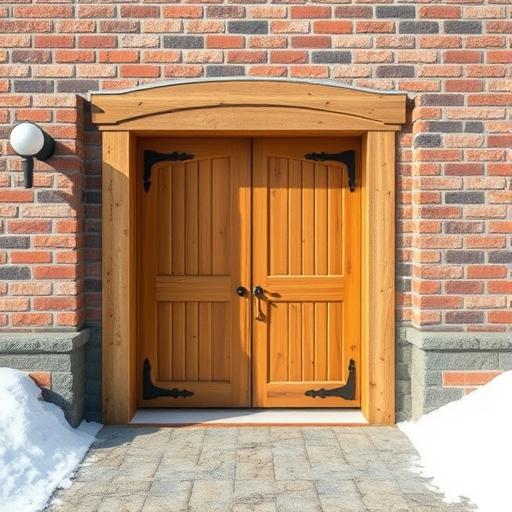
Measuring and Planning Your Sloped Basement Door
Assess the Slope of Your Basement Entryway
Start by determining the angle and degree of the slope using tools like a level, string line, or laser tool. This step is critical to ensure the door aligns properly with the terrain. Consider water runoff patterns and local building codes to avoid future issues. Accurate measurements will lay the foundation for a well-fitting door.
Calculate Precise Dimensions and Angles
Measure the doorway’s width, height, and slope angle carefully. Transfer these measurements to the doorframe and materials to ensure consistency. Use a bevel gauge or protractor to replicate the slope accurately. Precision at this stage will save time and effort during installation.
Choose the Right Door Type and Materials
Decide between single-panel, French doors, or custom sloped doors based on your needs. Opt for materials like pressure-treated lumber or composite door frames that resist moisture and structural stress. The right choice will ensure durability and functionality in a basement environment.
Gathering Materials and Tools
Essential Materials for Sloped Door Construction
You’ll need a doorframe, lumber for adjustments, hinges, screws, weatherstripping, a door sweep, and sealing caulk. Choose rot-resistant materials to withstand the basement’s damp conditions. Quality supplies will ensure the door’s longevity and performance.
Tools Required for Installation
- Circular saw
- Miter saw
- Level
- Drill
- Screwdriver
- Shims
Don’t forget safety gear like gloves, goggles, and a dust mask to protect yourself during the project.
Preparing the Doorway for a Sloped Frame
Removing the Existing Door (if applicable)
Carefully remove the old door and frame without damaging the wall structure. Inspect the doorway for rot, damage, or gaps that may need repair before proceeding.
Shaping the Doorframe to Match the Slope
Modify the doorframe’s header and sill to align with the slope using a router or saw. Create beveled edges for a precise fit. This step ensures the door operates smoothly and seals properly.
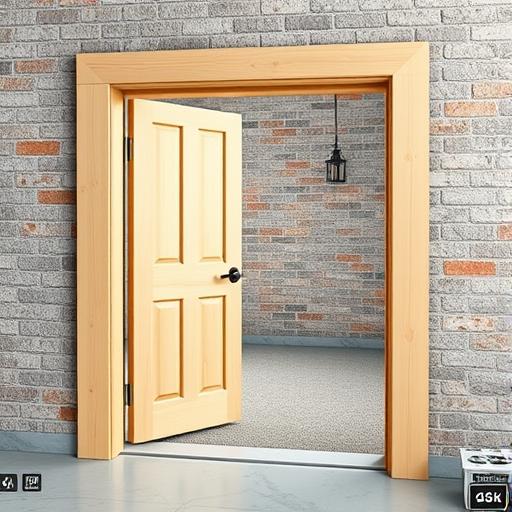
Reinforcing the Door Frame
Add structural support with brackets or additional lumber to prevent sagging over time. Secure the frame to the foundation with appropriate fasteners for stability and durability.
Cutting and Fitting the Sloped Door
Adjusting the Door for the Slope
Transfer slope measurements to the door slab and cut it at the correct angle. Use a bevel gauge or protractor to replicate the slope accurately. This ensures the door fits seamlessly into the frame.
Testing the Door’s Fit and Alignment
Check the door’s gap against the frame and floor. Use shims to make adjustments and ensure smooth operation. Proper alignment is key to a watertight seal and long-lasting performance.
Securing the Door to the Frame
Install hinges on the sloped frame, ensuring the door hangs evenly and closes securely. Proper hinge placement is crucial for functionality and balance.
Installation and Weatherproofing
Installing Hinges and Adding Support
Attach hinges to the sloped frame, using adjustable hinges if necessary. Balance the door’s weight and ensure it stays closed for security and ease of use.
Sealing the Door Against Water and Drafts
Apply weatherstripping and a door sweep to prevent leaks. Use silicone caulk or expanding foam around the frame for a watertight barrier. Proper sealing protects your basement from moisture and drafts.
Final Inspection and Adjustments
Test the door’s functionality, including opening and closing ease, alignment, and seal. Adjust the threshold or add a sloped threshold for better drainage. A thorough inspection ensures the door performs as expected.
Maintenance and Safety Tips for Sloped Basement Doors
Routine Maintenance Checklist
Inspect hinges, seals, and the doorframe regularly for wear or sagging. Clean tracks and remove debris to prevent sticking. Routine maintenance extends the door’s lifespan and ensures smooth operation.
Safety Considerations
Install a lock or latch that works with the slope. Ensure the door can be easily opened in emergencies, such as flood situations. Safety is a top priority for any basement door.
Conclusion: Enhancing Your Basement with a Sloped Door
Building a sloped basement door is a practical and rewarding project that improves your home’s functionality and appearance. By following these steps, you can create a door that aligns with your terrain, prevents water damage, and enhances safety. Prioritize quality materials and precise measurements for long-term durability. If the slope is complex or you’re unsure about local codes, consult a professional to ensure your project meets all requirements. With the right approach, your sloped basement door will be a valuable addition to your home.
FAQ: How to Build Sloped Basement Doors
Can I use a standard door for a sloped basement entry?
Standard doors are not ideal for sloped entryways. Custom or adjustable solutions are necessary to ensure proper fit and functionality.
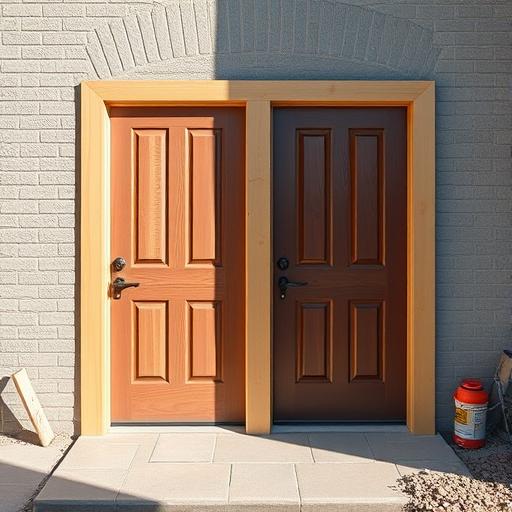
How do I adjust an existing door for a sloped frame?
Retrofit an old door by adding shims or using flexible weatherstripping. Ensure the door aligns with the slope and seals properly.
What’s the best way to seal a sloped basement door?
Use silicone-based caulk and door sweeps for maximum water resistance. These materials create a durable and effective seal.
When should I hire a professional for sloped door installation?
Consult a professional for severe slopes, foundation issues, or complex code requirements. Their expertise ensures a safe and compliant installation.
Can sloped basement doors be energy-efficient?
Yes, proper sealing and insulation, such as thresholds and weatherstripping, improve energy efficiency by preventing drafts and heat loss.

